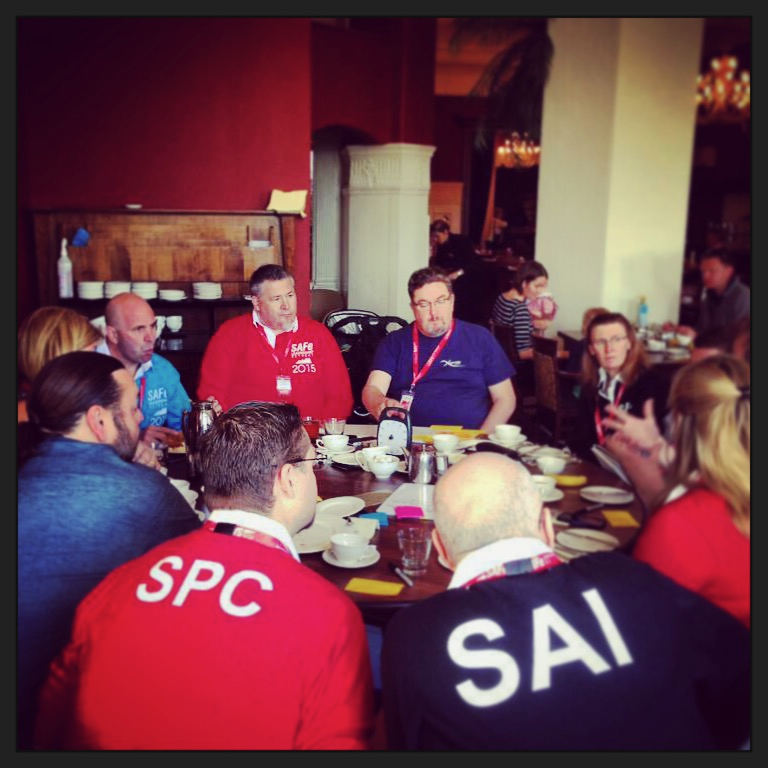I am often asked about best practices for starting a Lean-Agile Center of Excellence (LACE) (or Agile Center of Excellence/ Agile CoE). This quick blog provides some personal thoughts and experiences on the topic.
As an enterprise coach, I most often see LACEs (or Agile CoE’s) stood up as a small team with at least a couple of dedicated people. This can be a small network of dedicated people who, regardless of organizational hierarchy, can become an agile team. Alternatively, I’ve found that corporate customers often desire the hierarchical structure and they start by assigning a director or VP who builds a team and brings in external partners. Also, the LACE is part of the Agile PMO and sometimes the LACE is separate as part of their mission includes helping the PMO become Agile. Wherever you start, keep in mind that a LACE works best as an Agile team which means three to nine people with the autonomy and ability to accomplish their mission.
Tip: When you charter your LACE, consider including plans for future expansion. For example, will the LACE grow into a large hierarchical organization where every coach or change agent reports up several levels? I’ve seen a number of these large LACE or Agile CoE organizations become “push-based,” where they document and dictate best practices, often authored by individuals who have little or no practical experience. They may also find themselves having to choose between focusing on their own priorities over the priorities of those they serve.
Mindset matters and I suggest the LACE strives to be “pull-based,” where the LACE can become the trusted advisor that people reach out to for guidance. I’ve helped several LACEs shift from push to pull and all of them experienced more efficacy as well as increased levels of engagement. For example, a push-based LACE will often come into a SAFe implementation, assess them and publish a report that dictates what needs to be addressed. On the other hand, a pull-based LACE may offer to facilitate self-assessments that are done by those working within the implementation in a way that fisted alignment and fosters self-improvement. Scaled Agile’s LACE implementation article outlines three different LACE models with additional information that can help get you started.
When it comes to determining which LACE model works best, I’ve found I am a fan of the hub and spoke model; however, I work with very large corporations, agencies and programs so this context influences my preference.
Once the hub LACE has been established, the spoke model can be a great way to foster decentralized decision making and ensure that the mission s focused on enabling a specific SAFe Portfolio, business unit or program. In this model, when there is a new SAFe implementation, a “spoke LACE” is created with temporary assistance from the “hub LACE.” This allows SPCs, with experience with multiple implementations, to coach and to mentor the local SPCs through their first ART Launch. A Scaled Agile Partner is often brought in if the necessary experience does not yet exist internally. While it is not always feasible to have a full-time partner, even part-time guidance from an SPCT, SPCT Candidate or experienced SPC who has been involved in other successful implementations can be an integral part of the initial LACE until there is sufficient internal experience.
Tip: Thoroughly interview the SPC(s) you consider bringing in and don’t hesitate to ask questions to help you understand how they enabled the internal change agents to achieve success with SAFe. There is more to it than the SPC just giving a number to indicate how many ARTs they saw launched. Are you looking for a coach to mentor your people or a consultant to tell you what to do? Experienced Agile Coaches are used to wearing many hats; professional coaching, mentoring, facilitating, training, and consulting. Understanding the coach’s approach and goals, in addition to experience, can help you find the right partner to join you on your journey as each implementation is different. However, please plan for sustainability so that when the external coach leaves, you can continue on successfully. (Note: I’ve been asked about this topic many times and plan to finish a blog on this next.)
Note: Looking forward to SAFe 5.0, the ultimate goal is to achieve Business Agility. The new Business Agility article introduces the concept of using a dual operating system for Business Agility and you may find some of the new guidance helpful in articulating the concept of an entrepreneurial network and how the LACE might be part of that construct as opposed to the org hierarchy. SAFe 5 also includes a new principle, #10 Organize Around Value that discusses this as well.
Regards.
Phil Gardiner




Thank you, Phil. The structure and composition of a LACE is an oft-visited subject in my world. I appreciate your perspective.